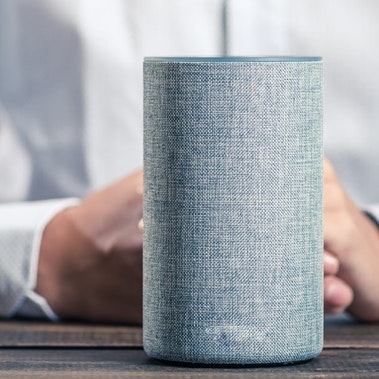By Nick Harrison and David R. Mayer
The article first appeared in the Harvard Business Review on August 13, 2019.
An Arabic version of the article was written for Harvard Business Review Arabia on September 24, 2019.
The Internet has overturned how people shop and reshaped the retail industry. Voice assistants are about to unleash another revolution. As people increasingly shop via the likes of Alexa and Siri, they will tend to demand generic products, starting with everyday items such as batteries and eventually including more complex purchases such as electronics. Digital assistants will use algorithms to compare product specifications, make suggestions, and do comparisons, so that customers can find “the longest-lasting battery pack” or “the cheapest bag of flour.”
If digital assistants with trustworthy recommendations become a significant source of sales – and we think they will – they could chip away at all but the strongest product brands. Competition will become even more brutal as consumers switch between only one or two verbally suggested options offered by digital assistants – one being their own private label or another low-cost product. Companies that have negotiated with retailers for shelf space up to now will have to find ways to convince the digital assistants to put their products at the top of verbal searches.
If digital assistants with trustworthy recommendations become a significant source of sales – and we think they will – they could chip away at all but the strongest product brands
That won’t be a problem for the strongest brands, especially those nearly synonymous with certain products – like Kleenex tissues and Q-tips cotton swabs in the United States; or a Thermos vacuum flask in the United Kingdom; and Scotch adhesive tape in France. Since many people have strong emotional attachments with these products, a digital assistant will have to suggest them – or else consumers will go elsewhere.
But most other manufacturers will find conversational commerce a challenge. Some mass-market brands are already losing share as online shopping fragments the marketplace. A survey of 10,000 American consumers that we recently conducted found that customers consider only one third of brands “go-to.” Customers are loyal to “go-to” brands because they perceive those brands to be for functionally superior products that they are emotionally connected to. Unfortunately, when asked to rate 169 brands on a scale of one of seven in terms of both attributes, respondents indicated they feel most brands stand out on only one or neither front.
So how can manufacturers compete for a voice assistant’s attention? And what sort of brands will survive in the new world of conversational commerce?
Make Product and Price Superiority Work
One approach is of course to sell at the lowest price. Without the expense of maintaining brand recognition, low-cost manufacturers can afford to give more margin to the companies behind digital assistants. However, without funds to promote its own brand, the manufacturer will effectively become a contractor, always at risk of being replaced.
Convenient, reliable, and effective products can still become the kind of star brand that people refuse to go without. So this will remain a powerful strategy, particularly for complex products requiring significant research and development, such as smart speakers that are simply better than the alternatives or a newly-patented skin cream that really leads to better results.
But this advantage will not last long in less-complex categories, where manufacturers catch up with equivalent products quickly. After that happens, consumers rush to a rival brand of bathroom bleach, canned peas, or phone charger – unless they feel some loyalty toward the one they’ve been buying. So these manufacturers will have to use in-house data and primary research to persuade the company behind the digital assistant that featuring their brand will continue to please its customers. Alternatively, they can pay to play and give the assistant a slotting fee, just as they pay for shelf space in supermarkets. But this will likely be a fleeting, short-term fix that puts off a long-term problem.
Go Niche
Another strategy is to develop brands that algorithms recognize as the first choice for niche audiences. These “tribal” brands can develop strong emotional connections with customers that go beyond product specifications: They relate to people’s values and reflect their aspirations. The attraction may be the brand’s style and image – think Harley Davidson in motorbikes, Tom’s shoes and ethics, or Method in Household and consumers’ desire for natural things. Mass-market brands can aim to meet specific niche needs, while retaining a coherent brand expression across many tribes.
Tribal brands can help digital assistants identify their products’ natural customers. Since they sell beyond digital assistants’ footprints, manufacturers can show they are likely to have a high rate of conversion with voice shoppers by sharing customer data to demonstrate their products’ connection to certain types of consumers. To do this, advances in social listening and machine learning will be especially useful now that communications about a brand are owned less and less by the brand and more and more by their audiences. Manufacturers will retain an edge if they can map out how millions of consumers’ preferences are changing in real time by analyzing social media comments, audio, pictures, and video.
Manage Customers, Not Categories
Manufacturers will also need ways to convince digital assistants that their products will realize high returns when sold in combination with others. Companies have traditionally done this by suggesting to retailers ways to grow categories, such as detergent and skin care products. Now, online commerce is triggering a shift from category management to customer management. With the customer no longer physically confined to a supermarket aisle, algorithms can suggest products from an entirely different category – an insurance plan with an electric scooter; a recipe book with a new rice cooker; or baby toys and diapers with a car seat.
In the voice era, this practice will spread and become more sophisticated through an understanding of customer loyalties. For example, a customer who buys an environmentally-friendly detergent may trade up to a bundle of eco-products including dishwasher tabs, soap, and shampoo. A customer who buys a new pair of running shoes may also buy some running clothes and energy pouches.
The savviest manufacturers will develop portfolios of products for different affinities. Some consumers see themselves as the kind of people who buy the detergent that cleans most effectively; others worry primarily about their children’s sensitive skin; and another group is concerned about the environmental effects of the chemicals used. Tide, for example, makes Core Tide for the most effective wash, Free & Gentle for hypoallergenic users, Purclean based on plants, and the low-cost Simply. Such portfolios will be attractive to digital assistants as a way to cover customers with a single supplier relationship.
The Window for Action is Closing
Large manufacturers with deeper proprietary insights into customers than those of digital assistants are now in a strong position. Online retailers only have data for shopping habits within the scope of the products they sell. Search engines know what consumers look for, but this can be different from what they end up buying. Moreover, most of this analysis is based on past actions, which have their limits for predicting future behavior. Manufacturers’ innovation pipelines make it easier for them to envision future trends.
Some of the largest manufacturers are also investing in global data centers that build individual data profiles. These can help spot trends and predict future needs – “future-casting” – while also facilitating real-time customer management. For instance, one consumer packaged goods firm can identify supply chain issues in real time through social listening, enabling it to resolve issues before they become a major problem for a retailer.
But companies that don’t act now risk seeing profits migrate to the small number of winning brands that will remain. The skills required are scarce and the capabilities are expensive to build.
Today, five-year-olds – who can’t yet type – are some of the most eager users of voice technology. In a decade or so, we believe a significant share of commerce will be carried out by a generation used to shopping by voice. The adoption curve will be much steeper than that for online shopping, which has built up over the last 20 years. So manufacturers should review their portfolio of brands, focus on those that fit one of the three strategies above, and exit the rest.
This article is posted with permission of Harvard Business Publishing. Any further copying, distribution, or use is prohibited without written consent from HBP - permissions@harvardbusiness.org.




